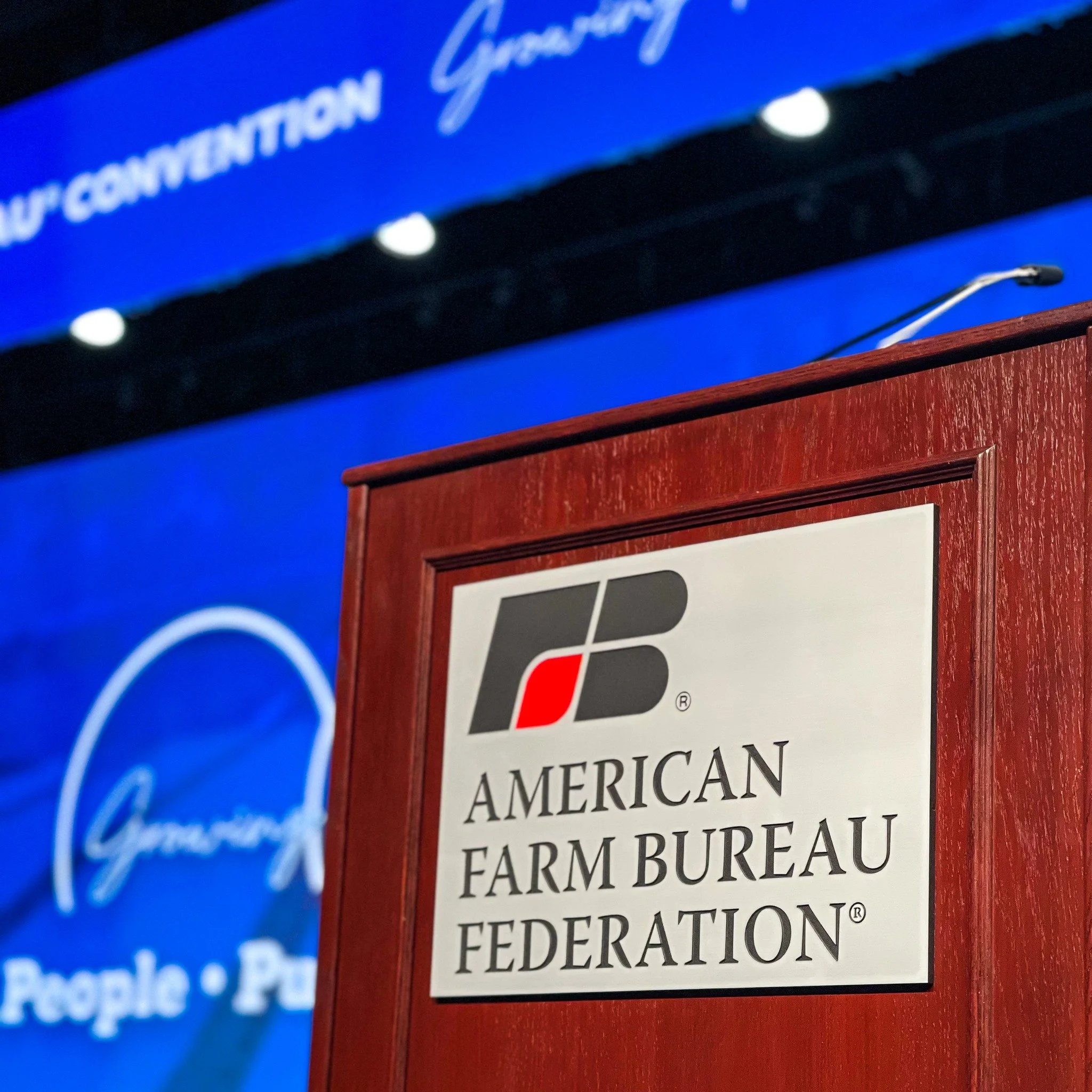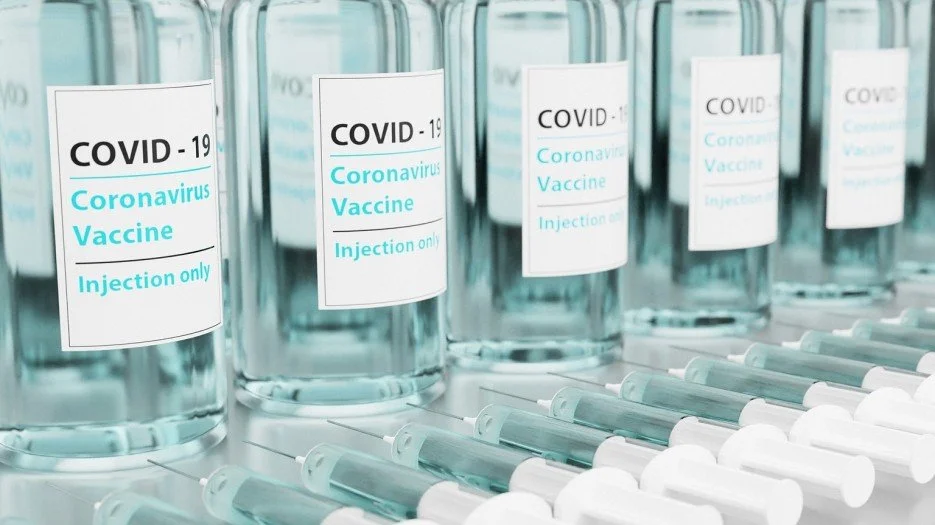The Farm Bureau Ag Innovation Challenge, now in its eighth year, provides opportunities for Farm Bureau members to showcase business innovations being developed for agriculture. Grain Weevil Corporation is the winner of this year’s competition. The American Farm Bureau Federation, in partnership with Farm Credit, announced the winner at the 2022 American Farm Bureau Convention.
Read MoreWinners of the Young Farmers & Ranchers Achievement Award, Discussion Meet and Excellence in Agriculture competitions were announced at the American Farm Bureau’s 103rd Convention. Young farmers and ranchers from around the country competed for the awards by demonstrating knowledge, achievement and commitment to promoting agriculture.
Read MoreWork on the family farm takes everyone pitching in and doing their part, including four-legged friends, prompting Farm Bureau to launch the Farm Dog of the Year contest four years ago – now a popular feature of the American Farm Bureau Federation’s Convention.
The winner of the 2022 Farm Bureau Farm Dog of the Year award is Fit, a Border Collie owned by Florida Farm Bureau members Cindy and Andrew Deak. AFBF, with support from Nestlé Purina PetCare, recognized Fit, four regional runners-up and a People’s Choice Pup today at its convention.
Read MoreThe American Farm Bureau officially kicks off an exciting calendar of in-person and virtual programming Sunday, focused on the future of agriculture and the most pressing issues for farmers, ranchers and consumers in 2022.
Read MoreThe American Farm Bureau Foundation for Agriculture presented its 15th “Book of the Year” award to author Kiki Thorpe for “How to Grow a Monster.” The award was presented at the American Farm Bureau Federation’s 103rd Convention.
Read MoreThe American Farm Bureau Federation presented awards to state Farm Bureaus at the organization’s 103rd Convention, which runs through Jan. 12. The awards recognize excellence in implementation of outstanding member programs and membership achievement in 2021.
Read MoreFarmers and people in rural areas are more comfortable talking about stress and mental health challenges with others. Stigma around seeking help or treatment has decreased in rural and farm communities but is still a factor, according to a new research poll from the American Farm Bureau Federation.
Read MoreMember farmers from the American Farm Bureau Federation will participate in a roundtable on Thursday, Jan. 6, about the impact of the proposal to repeal and replace the Navigable Waters Protection Rule (NWPR). The event is hosted by the Small Business Administration (SBA) Office of Advocacy. Arizona Farm Bureau President Stefanie Smallhouse and Colorado Farm Bureau Vice President James Henderson will join several other farmers attending the roundtable to explain why this rule is so consequential for agriculture.
Read MoreThe Convention team is closely monitoring updates to Covid guidance and restrictions from the CDC, State of Georgia and City of Atlanta and will notify staff and attendees via the Convention App, Website, and email as appropriate. On Dec. 21, 2021, the City of Atlanta re-instated an indoor mask mandate, which may be enforced against individuals in certain circumstances. It is advisable to wear a mask indoors and always carry a mask while in Atlanta.
Read MoreI work with veterinarians who research influenza—the flu—in Ohio. They spend days at county fairs taking nasal swabs from pigs and blood samples from people who work with pigs. They follow the spread of disease from animals to people and from people to animals. Pigs that get the flu run fevers, become lethargic, and sometimes have respiratory symptoms, just like people. Veterinarians often recommend vaccinating animals to prevent flu and other diseases.
More than 10 years ago, these veterinarians told me a pandemic was due. They expected something like the 1918 flu, which caused millions of deaths worldwide. They thought an influenza outbreak would start in animals and move to people—a typical zoonotic disease.
Read MoreAmerican Farm Bureau Federation President Zippy Duvall commented today on the “Biden-Harris Administration’s Action Plan for a Fairer, More Competitive, and More Resilient Meat and Poultry Supply Chain.”
Read MoreFemale farmers and ranchers might be outnumbered in the field at times, but they make an outsized impact on women who want to follow them into leadership positions on and off the farm.
Read MoreAre you unable to attend the 2022 American Farm Bureau Convention in Atlanta, Jan. 7-12? Consider registering for the virtual event. Select workshops and sessions will be broadcast live with most available for on-demand viewing on the convention virtual platform.
Read MoreThe American Farm Bureau Federation, along with more than 60 other agriculture groups, sent a letter today to the Biden administration requesting that agricultural workers be exempted from travel restrictions from South Africa. The “Proclamation on Suspension of Entry as Immigrants and Nonimmigrants of Certain Additional Persons Who Pose a Risk of Transmitting Coronavirus Disease 2019” prohibits travel for individuals from several countries, including South Africa, due to concerns over the omicron variant. The letter also requests flexibility in regard to the “Proclamation on Advancing the Safe Resumption of Global Travel During the COVID-19 Pandemic,” which limits entry into the United States to only those fully vaccinated with a CDC-approved vaccine with limited exceptions.
Read MoreAmong farmers and ranchers, very few topics are being discussed as much as the skyrocketing cost of fertilizer and increasing concerns regarding availability. Given that fertilizer costs account for approximately 15% of total cash costs in the U.S., fertilizer prices are the number one issue on farmers’ minds as they begin to set up purchases for the 2022 growing season. Unfortunately, the fertilizer sticker price farmers in some areas are reporting is up more than 300% and delivery times are anyone’s best guess. We’ve seen this before, in 2008. During the 12 months ending in April 2008, nitrogen prices increased 32%, phosphate prices increased 93% and potash prices increased 100%. Prices remained there through 2009, then dropped, ultimately returning to pre-2007 levels by the end of 2009. That price surge was associated with strong domestic and global demand, low fertilizer inventories and the inability of the U.S. fertilizer industry to adjust production levels. This time around, those same factors are at play, along with several others that add an extra layer of uncertainty.
Read More














